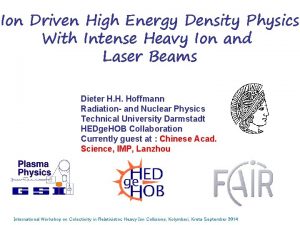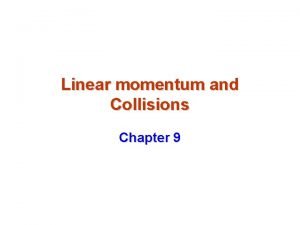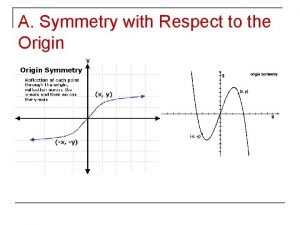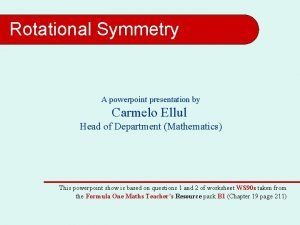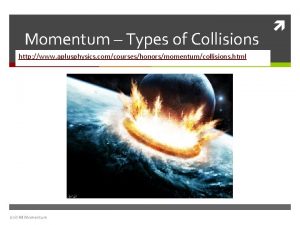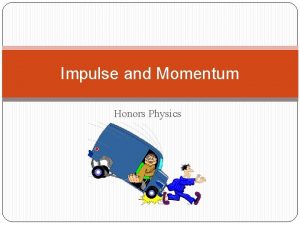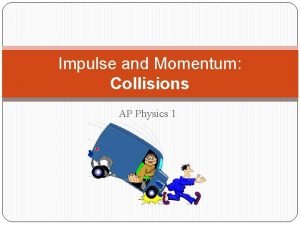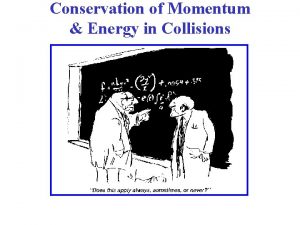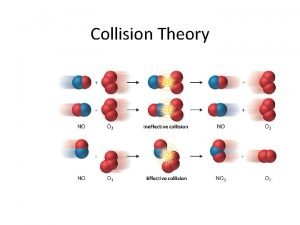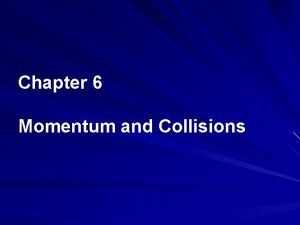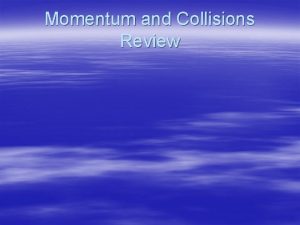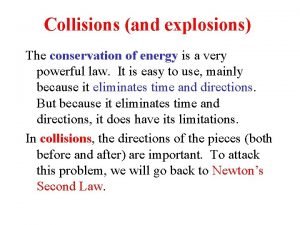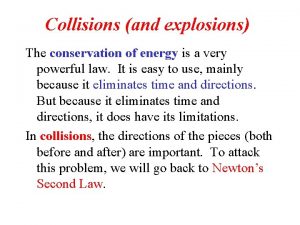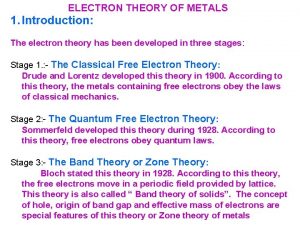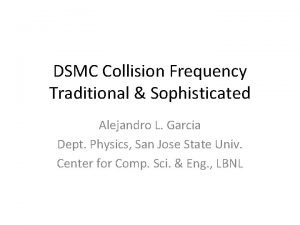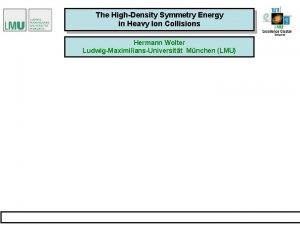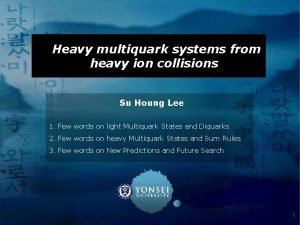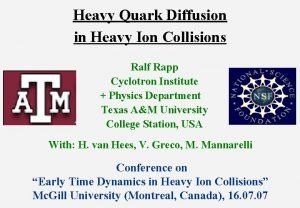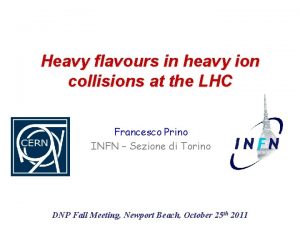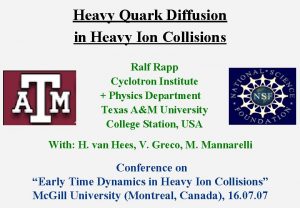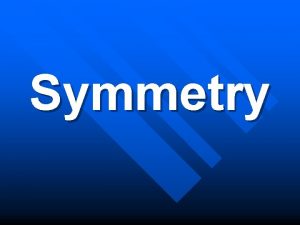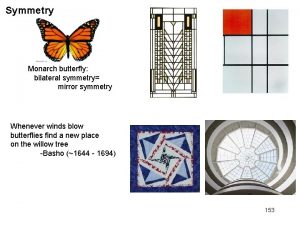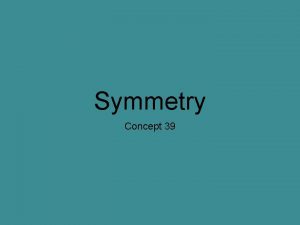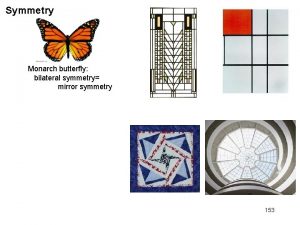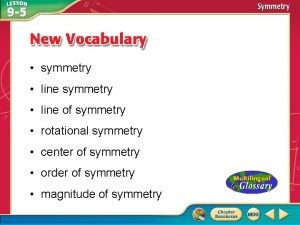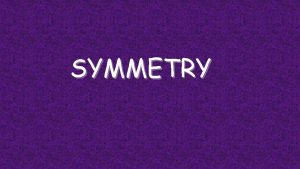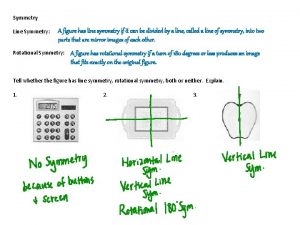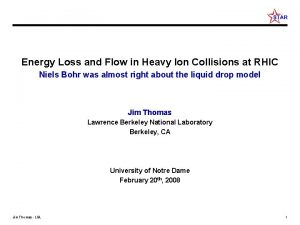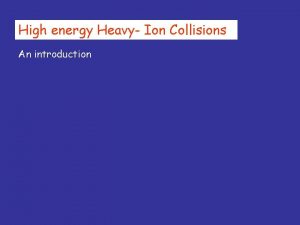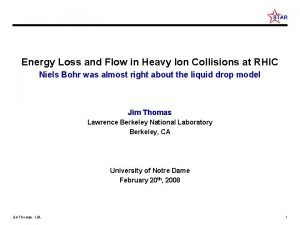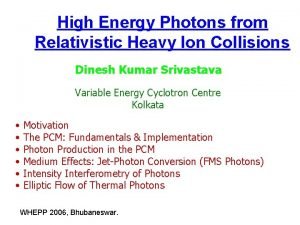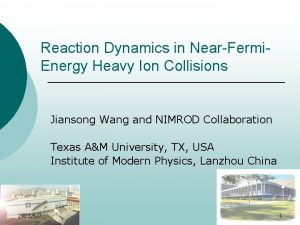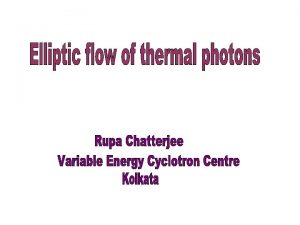Symmetry Energy Effects in Heavy Ion Collisions CheMing



























- Slides: 27

Symmetry Energy Effects in Heavy Ion Collisions Che-Ming Ko Texas A&M University § Nuclear symmetry energy § Isospin-dependent transport model (IBUU) § Nucleon emission source § Two-nucleon correlation functions § Light clusters production Collaborators: Lie-Wen Chen, Vincenzo Greco, Bao-An Li (Arkansas State University) PRL 90, 162701 (2003); nucl-th/0302068; 0305036; 0306032 1

Nuclear symmetry energy EOS of asymmetric nuclear matter Symmetry energy coefficient Slope theoretical values -50 to 200 Me. V theoretical values -700 to 466 Me. V Curvature experimental values 2

Symmetry energy Potential Pressure 3

Isospin-dependent transport model (IBUU) NN Cross sections Isospin-independent potential In-medium cross sections from Dirac. Brueckner approach based on Bonn potential (Li, PRC 48, 1702 (93)) 4

§ using free cross sections, soft symmetry potential § 10, 000 events with 100 test particles for a physical nucleon Formation of ring structure in transverse plane 5

Maximum density More sensitive to incompressibility of isospin-independent part of EOS than stiffness of symmetry energy Quadrupole moment of momentum distribution Thermal equilibrium after about 40 fm/c 6

Nucleon emission times § Longer emission duration for lower momentum nucleons § Earlier emissions for stiffer symmetry energy § Larger separation in neutron and proton emission times for softer symmetry energy § High momentum nucleons emitted earlier than low momentum ones 7

Size of nucleon emission source § Broader emission source size distribution for lower momentum nucleons § Source size larger in transverse direction than in longitudinal direction § Larger emission source size for softer symmetry energy 8

Momentum distributions of emitted nucleons § Peak momentum lower for stiffer symmetry energy § Symmetry energy effect larger for low momentum protons than neutrons 9

Effects of isocalar and Coulomb potentials, and NN cross sections § Nucleon emission rates insensitive to incompressibility of isospinindependent part of EOS § In-medium cross sections enhance slightly nucleon emission rate at later stage of collisions § Coulomb potential shortens slightly proton emission time 10

Two-nucleon correlation functions : emission function, i. e. , probability for emitting a nucleon with momentum p from the space-time point x=(r, t) : relative wave function of two nucleons Correlation After Burner: including final-state nuclear and Coulomb interactions (Scott Pratt, NPA 566, 103 (1994)) 11

Two-nucleon correlation functions in central collisions of 52 Ca+48 Ca at 80 AMe. V § Correlations of low momentum or very energetic pairs insensitive to symmetry energy § Symmetry energy effects on high momentum pairs about 20 -30% with stiffer one giving stronger correlations 12

Time evolution of two-nucleon correlation functions Effects of isoscalar potential and NN cross sections Symmetry energy effect appears at ~50 fm/c when density is slightly below normal density Effects less than 10% for both isoscalar potential and NN cross sections 13

Impact parameter and incident energy dependence Symmetry energy effect decreases with impact parameter with stiffer one reduced more Strength of correlation functions increases with incident energy, and symmetry energy effect remain similar 14

Two nucleon correlation functions in central collisions of 132 Sn+124 Sn at 80 AMe. V § Symmetry energy effect on correlation functions of high momentum pairs of pp and pn are reduced by ~2 compared to 52 Ca+48 Ca collisions due to larger Coulomb effect § Effect on nn correlation function similar to 52 Ca+48 Ca collisions, i. e. , ~20% 15

Light clusters production Coalescence model : nucleon phase-space distribution function : Wigner phase-space distribution function for clusters G: statistical factor; 3/8 for deuteron, 1/3 for triton and 3 He 16

Wigner phase-space distribution function for deuteron Hulthen wave function 17

Wigner phase-space distribution function for triton and 3 He Gaussian wave function Jacobi coordinates b=1. 61 fm for triton and 1. 74 for 3 He correct radii 18

Light clusters production from collisions of symmetric nuclei § Deuteron energy spectra reproduced § Low energy tritons slightly underestimated § Inverse slope parameter of 3 He underestimated; probably due to neglect of • larger binding effect • stronger Coulomb effect 19

Yields and energy spectra of light clusters § Symmetry energy effects are about 51%, 73%, and 100% on deuteron, triton and 3 He yields with stiffer one producing more § Symmetry energy effects stronger on lower energy light clusters § Effects of isoscalar potential and NN cross sections small 20

Isobaric yield ratio of t/3 He § Stiffer symmetry energy gives smaller t/3 He ratio § With increasing kinetic energy, t/3 He ratio increases for stiff symmetry energy but slightly decreases for soft symmetry energy 21

Impact parameter and incident energy dependence Symmetry energy effects decrease with increasing incident energy but only slightly with increasing impact parameter 22

Light clusters production in central collisions of 132 Sn+124 Sn at 80 AMe. V Symmetry energy effects similar to 52 Ca+48 Ca collisions: ~ 53%, 74% and 120% for d, t, and 3 He 23

Emission times of light clusters Average emission time earlier for heavier ones 24

Two-deuteron correlation functions Include final-state repulsive nuclear s-wave and Coulomb interactions Anticorrelations of pairs of high total momentum are affected by symmetry energy with stiffer one giving a larger strength, about 20% at q=40 Me. V/c 25

Two-triton or two-3 He correlation functions Include only final-state repulsive Coulomb interaction Stiffer symmetry energy gives stronger anticorrelation but the effect is smaller than in two-nucleon and two-deuteron correlation functions 26

Summary Density dependence of nuclear symmetry energy affects dynamics of heavy ion collisions induced by neutron-rich nuclei at intermediate energies with stiffer density dependence giving § Earlier emissions of nucleons and light clusters § Stronger two-nucleon correlation functions § Larger light clusters production § Larger ratio of high energy tritons and 3 He § Larger light clusters correlation functions Light clusters production and two-particle correlation functions are useful probes of nuclear symmetry energy Effects of momentum-dependence? in progress 27
 Top heavy bottom heavy asymptotes
Top heavy bottom heavy asymptotes Heavy ion
Heavy ion Loss of ke in inelastic collisions
Loss of ke in inelastic collisions Ion dipolo
Ion dipolo Dipolo dipolo inducido
Dipolo dipolo inducido Uniones intramoleculares
Uniones intramoleculares What is london forces
What is london forces What is symmetry with respect to the origin
What is symmetry with respect to the origin Symmetry ppt download
Symmetry ppt download Types of collisions/ impulse graphs answer key
Types of collisions/ impulse graphs answer key Elastic collision.
Elastic collision. Impulse and momentum
Impulse and momentum Impulse definition physics
Impulse definition physics To avoid collisions a defensive driver should
To avoid collisions a defensive driver should Perfectly inelastic collisions
Perfectly inelastic collisions Elastic vs inelastic
Elastic vs inelastic Necessary for successful collisions to occur
Necessary for successful collisions to occur Type of momentum
Type of momentum Elastic potential energy real world examples
Elastic potential energy real world examples A roller coaster climbs up a hill at 4m/s and then
A roller coaster climbs up a hill at 4m/s and then Collisions and explosions
Collisions and explosions Collisions and explosions
Collisions and explosions Types of collision
Types of collision Is momentum conserved in all collisions
Is momentum conserved in all collisions The space between traffic clusters is called a
The space between traffic clusters is called a Success of classical free electron theory
Success of classical free electron theory Collision frequency
Collision frequency To avoid collisions a defensive driver should
To avoid collisions a defensive driver should

